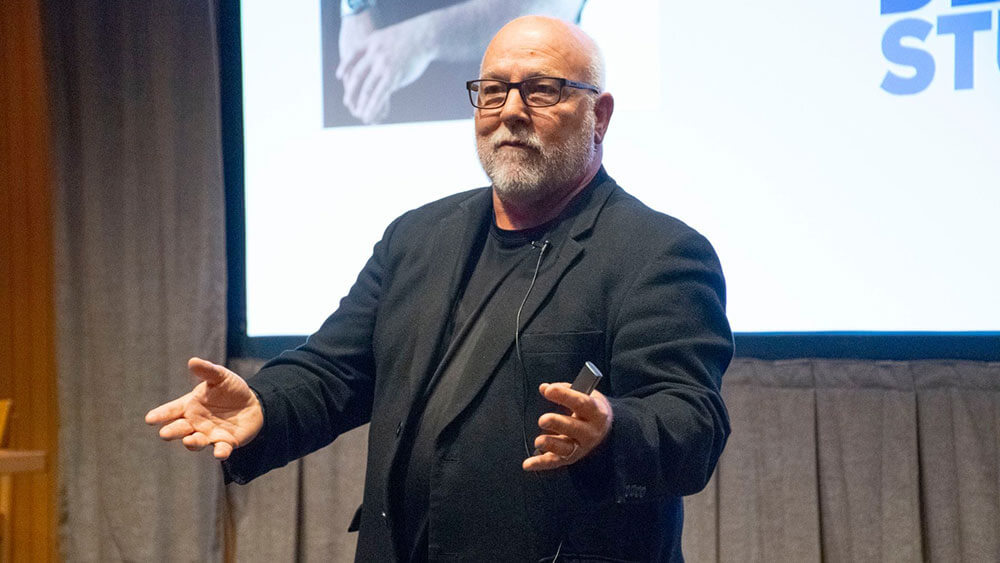
Greg Bogue speaks in early June at a PCMA Midwest Chapter event in Oakbrook, Illinois. At Educon, Bogue discussed how “journey mapping” helps event pros see their attendees’ complete experiences.
Greg Bogue doesn’t believe anyone just “plans” meetings. At his PCMA Education Conference session, “Using Science to Confidently Design Experiences,” the chief experience architect at Maritz Global Events Inc. reminded the audience that they’re performing more significant work. “You’re not a planner,” Bogue said. “You’re not a representative from a destination. You are helping people define who they are by the experiences that you deliver to them.”
That’s a serious responsibility, and Bogue believes that it’s critical to understand attendees’ entire event experience from start to finish to recognize how to unlock more potential from each step along the way. The process is called “journey mapping,” something Bogue said that big companies such as LEGO and Starbucks rely on to gain a holistic view of each customer’s experience. “They identify the positive things that are happening and the negative areas,” he said, “where adjustments can make it better.”
Bogue divides the attendee journey to any event into eight chronological phases.
- Announcing — What does the initial invitation to register look like?
- Attracting — How does the continued marketing push engage them?
- Anticipating — Bogue looks at this as the period when attendees begin researching the event and interacting with the registration system.
- Arriving — While part of their journey, this phase is largely out of attendees’ hands — something they have “absolutely no control over,” he said. It’s the hassle of the departure delay, the middle seat, and the taxi line. “It sets the mindset of our guests,” Bogue said. “It creates tension and stress so it makes the next phase event more critical.”
- Entering — How does the very first moment at the event feel? Is it better than waiting to get out of seat 32E?
- Engaging — This is the entire on-site experience.
- Exiting — How does waving goodbye feel?
- Extending — In the continued push for 365 days of engagement, this phase keeps the conversation going until that next announcing phase begins.
Rather than looking at the journey as an outsider, Bogue challenged event organizers to take off their planner hats and step into their attendees’ shoes, specifically when it comes to getting a better sense of the data-collection process. “When was the last time you registered for your own event?” Bogue asked the audience. “If you haven’t, you need to, because you don’t know what [your attendees] are up against.”
There are many pitstops along their journey where organizers might be able to improve attendees’ experience, but Bogue points to the end of the event as the low-hanging fruit. “As an industry, we do a fabulous job of saying hello,” Bogue said. “But we’re not so good at saying goodbye.”
To improve upon the departure experience, organizers don’t have to invest in send-off gifts. Instead, Bogue pointed to a recent client who made an event’s conclusion more meaningful. The company’s executives went to the airport and offered handshakes while telling individual attendees how much they appreciated their involvement. It was simple, and it demonstrated emotional intelligence, because, “as humans,” Bogue said, “we remember the ending.”
Interested in more insights from Education Conference? Register for the July 24 rebroadcast.
David McMillin is an associate editor at Convene.
